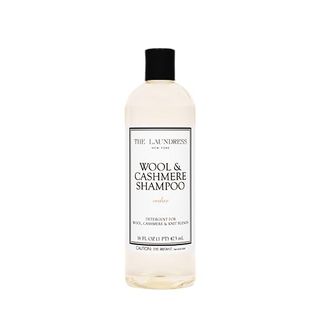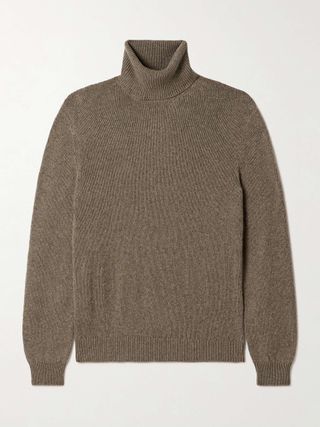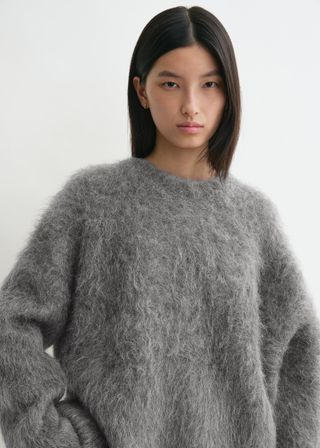(Image credit: Getty Images)
Jenna Lyons may have found a second life as a reality TV star on Real Housewives of New York City, but let’s not forget she’s a degree-toting fashion professional. Armed with a BFA in fashion design from Parsons, Lyons joined J.Crew as a 21-year-old, eventually ascending to creative director and president. Now, she’s sharing her deep knowledge of textiles in a new series of videos on her TikTok and Instagram accounts.
Her educational clips about silk, wool, and cashmere have quickly gone viral among fashion nerds. “Please please please give us more of this?!” one commenter wrote. “Seriously I learned more watching this than three years at Parsons,” another said. I highly recommend following her and watching her informative videos, but I’ve got you covered if you’d like a little cheat sheet. Keep reading for four things I learned from Jenna Lyons’s viral videos.
1. There Are (At Least) 24 Types of Silk
Lyons explained that silk is far from one-size-fits-all. In the first video of her educational series, she named 24 types of silk and provided photo examples for each. To illustrate bias-cut hammered silk charmeuse, for instance, she used an image of Katie Holmes wearing a Philosophy Di Lorenzo Serafini dress from F/W 19 (below). Lyons’s list of the types of silk also includes charmeuse jacquard, broadcloth, cady, brocade, habotai, cady, lamé chiffon, moire, organza, satin jacquard, and more. She wrote out all 24 types in her Instagram caption.
(Image credit: Shutterstock)
2. Never Use a Machine Washer or Dryer for Sweaters Made of Natural Fibers
If your sweater is made of natural fibers such as cotton, wool, or cashmere, Lyons says you should never use a machine washer or dryer. She recommends hand-washing it in cold water. “Use a natural shampoo,” Lyons said. “Don’t use a Tide [detergent] or anything like that. Something you could use on your hair. Then you can lay it flat to dry on a towel.” In the accompanying Instagram caption, Lyons specifically vouched for a shampoo by The Laundress (below).
If you can’t wash your sweater by hand, Lyons says to use cold water and your machine’s delicate cycle before laying the sweater flat on a towel to dry. If your sweater is made of synthetic fabrics such as nylon, acrylic, or polyester, Lyons recommends dry-cleaning it.
3. “Tops” Denotes the Quality of Cashmere and “Gauge” Describes Its Thickness
Lyons schooled me on two specific terms relating to cashmere: tops and gauge. (No, she doesn’t mean tops as in the synonym for blouses!) “Cashmere goats live mostly in Mongolia,” Lyons said. “They have this long, beautiful, fluffy fur that is then brushed into tops. Tops are what denote the quality of the cashmere. The premium tops that are white, fluffy, and very clean, go to the highest-end brands. So Loro Piana would bid for the highest quality tops.”
Lyons then explained the next term. “Gauge is what denotes the thickness of a sweater,” she said. She cited 24 gauge as an expensive example because it’s so fine and takes a long time to knit, whereas 12 gauge is more common.
4. Wool Comes in Many Different Forms
Lyons explained that wool comes from several different animals, including sheep, goats, and camels. Wool comes in many different forms, she explained, including alpaca, mohair, cashmere, camel hair, shetland, vicuña, merino, and lambswool. She also noted that camel hair is “very expensive” and that shetland is “very traditional.” Lyons used the below sweater from Swedish brand Toteme as her example for alpaca wool.






